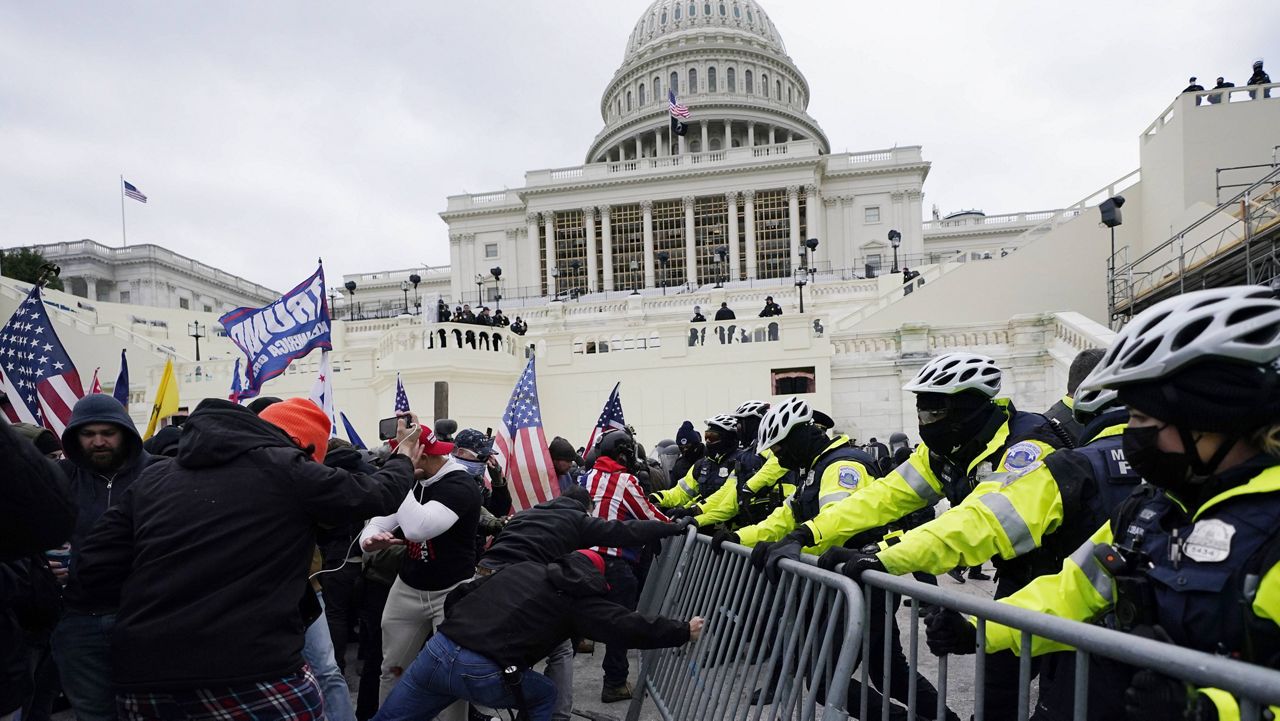The Department of Homeland Security’s Office of Intelligence and Analysis did not properly alert law enforcement agencies about threats related to the Jan. 6, 2021, U.S. Capitol riot until two days after the deadly insurrection — or, in other cases, not at all — a new watchdog report says.
What You Need To Know
- A report by the Department of Homeland Security Office of Inspector General found that DHS' Office of Intelligence and Analysis did not properly alert law enforcement agencies about threats related to the Jan. 6, 2021, U.S. Capitol riot until two days after the deadly insurrection — or, in other cases, not at all
- According to the report, open source intelligence collectors identified several threats but did not disseminate reports that might have helped agencies better prepare for the mob of Trump supporters that stormed the Capitol
- The report blamed the intelligence lapses on inexperienced employees who weren’t adequately trained, did not follow guidelines for reporting threats and were hesitant to act following criticism related to the DHS’ actions in response to civil unrest in Portland, Oregon, in 2020
The DHS Office of Inspector General released its findings Tuesday.
According to the report, open source intelligence collectors identified several threats but did not disseminate reports that might have helped agencies better prepare for the mob of Trump supporters that stormed the Capitol.
The report blamed the intelligence lapses on inexperienced employees who weren’t adequately trained, did not follow guidelines for reporting threats and were hesitant to act following criticism related to the DHS’ actions in response to civil unrest in Portland, Oregon, in 2020.
One collector did submit a intelligence report for review on Jan. 5, but it was not distributed until Jan. 8, the report said.
The potential threats that intelligence collectors found, according to the report, included:
A map of the Capitol being shared online Jan. 2, which prompted one employee to message a colleague saying he thought people would try to hurt politicians. The two intelligence collector discussed the possibility of I&A ordering an employee surge to respond to the escalating threats, but they never discussed issuing an intelligence report.
Also on Jan. 2, two collectors discussed finding online comments about hanging Democrats in Washington, D.C., but they did not think the remarks met the reporting threshold.
The next day, the same collectors came across other messages from people discussing hanging politicians, storming Congress and sacrificing their lives. But, again, they did not believe it met the reporting threshold.
On Jan. 4, an intelligence collector came across social media posts from individuals who had arrived in Washington and “sounded like they are going to battle,” the report said. The employee and a colleague both said they were nervous about Jan. 6, but they did not draft an intelligence report about possible safety concerns in the area.
The inspector general found that employees were apprehensive after the I&A was criticized for allegedly compiling intelligence on journalists and nonviolent protests during racial justice demonstrations in Portland in 2020.
“Although this review did not assess the appropriateness of I&A’s reporting on Portland in the summer of 2020, these circumstances provide important context for I&A’s decisions and actions leading to the January 6 events,” the report said.
The Counterterrorism Mission Center and Field Operations Division, two other Homeland Security intelligence divisions, also encountered information about Jan. 6 threats but did not share their findings externally, the report said.
The inspector general’s office also found that on at least five occasions I&A emailed threat information about Jan. 6 to state and local partners. However, sharing the information by email does not disseminate it as widely as issuing intelligence reports.
“As a result, I&A was unable to provide its many state, local, and Federal partners with timely, actionable, and predictive intelligence,” the report said.
The emails included information about online discussions of how to sneak weapons past law enforcement officers in Washington and establishing a “quick reaction force” in northern Virginia, as well as a map of the Capitol’s tunnel system that was being shared.
The inspector general’s office issued a series of recommendations, which included improving training and guidance to open source collectors and implementing a new process aimed at ensuring timely reporting and analysis of threat information about upcoming events.
The Office of Intelligence and Analysis said in the report that it agreed with the recommendations.
In an email to Spectrum News, a DHS spokesperson said: “As Secretary (Alejandro) Mayorkas has said, the attack on the U.S. Capitol on January 6, 2021 was a violent assault on our democracy. Over the past fourteen months, the U.S. Department of Homeland Security (DHS) has strengthened intelligence analysis, information sharing, and operational preparedness to help prevent acts of violence and keep our communities safe.”
Among the steps taken since January 2021, the department has established a new domestic terrorism branch and designated domestic violent extremism a “national priority area,” leading to at least $77 million being spent on preventing, preparing for and responding to threats.
“Further, DHS has renewed its commitment to share timely and actionable information and intelligence to the broadest audience possible,” the spokesperson said. “ … All of the Department’s efforts to combat all forms of terrorism and targeted violence are conducted in ways that protect privacy, civil rights, and civil liberties, and adhere to applicable laws.”
Note: This article was updated to include the Department of Homeland Security's response.



